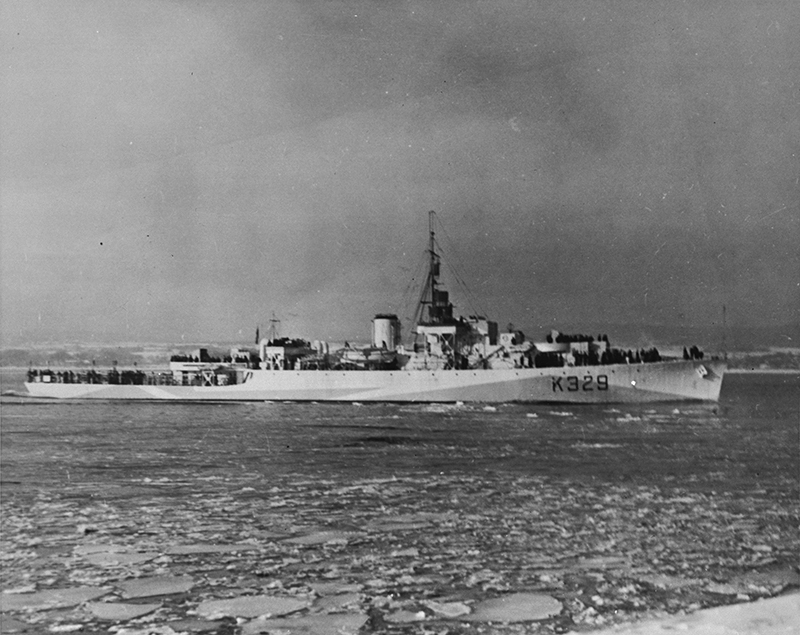HMCS Valleyfield
There has been only one vessel named HMCS Valleyfield in the Royal Canadian Navy.
HMCS Valleyfield (K329) / River-class frigate
Far more habitable ships than the smaller corvettes, the frigates of the River class were also faster and had twice the endurance of the corvette. The Royal Navy frigates were named for rivers and hence known as the River class; the Royal Canadian Navy ships were named for towns and cities.
Commissioned on 7 December 1943 at Quebec City, Quebec, the River Class frigate HMCS Valleyfield arrived at Halifax, Nova Scotia, on 20 December and commenced work-ups in St. Margaret’s Bay, completing the process in Bermuda.
She left Halifax at the end of February 1944 to join Escort Group C-1, and sailed for the United Kingdom with convoy SC.154. However, en route she was detached to Horta, Azores, to escort the rescue ship Dundee with the corvette HMCS Regina in tow, the latter having fouled her screw while fuelling.
Her next assignment was to escort a Royal Naval salvage tug with the disabled HMCS Mulgrave in tow from Horta to the Clyde. The three left the Azores on 14 March, and joined convoy SL.151 (from Sierra Leone) three days later.
After one more return trip to Canada, HMCS Valleyfield left Londonderry, Northern Ireland on 27 April with convoy ONM.234. She parted company on 7 May for St. John’s, Newfoundland, and shortly afterward was torpedoed and sunk by German submarine U-548 fifty miles southeast of Cape Race with the loss of 125 lives. She was the only Royal Canadian Navy ship of her class to be lost.
- Builder: Morton Engineering and Dry Dock Co., Quebec City, Quebec
- Date laid down: 30 November 1942
- Date launched: 17 July 1943
- Date commissioned: 7 December 1943
- Date paid off: 7 May 1944
- Displacement: 1,468.2 tonnes
- Dimensions: 91.9 m x 11.1 m x 2.7 m
- Speed: 19 knots
- Crew: 141
- Armament: one 4-inch (102-mm) gun, eight 20-mm guns (4 x II), one Hedgehog mortar and depth charges
Battle honours
- Atlantic 1944
